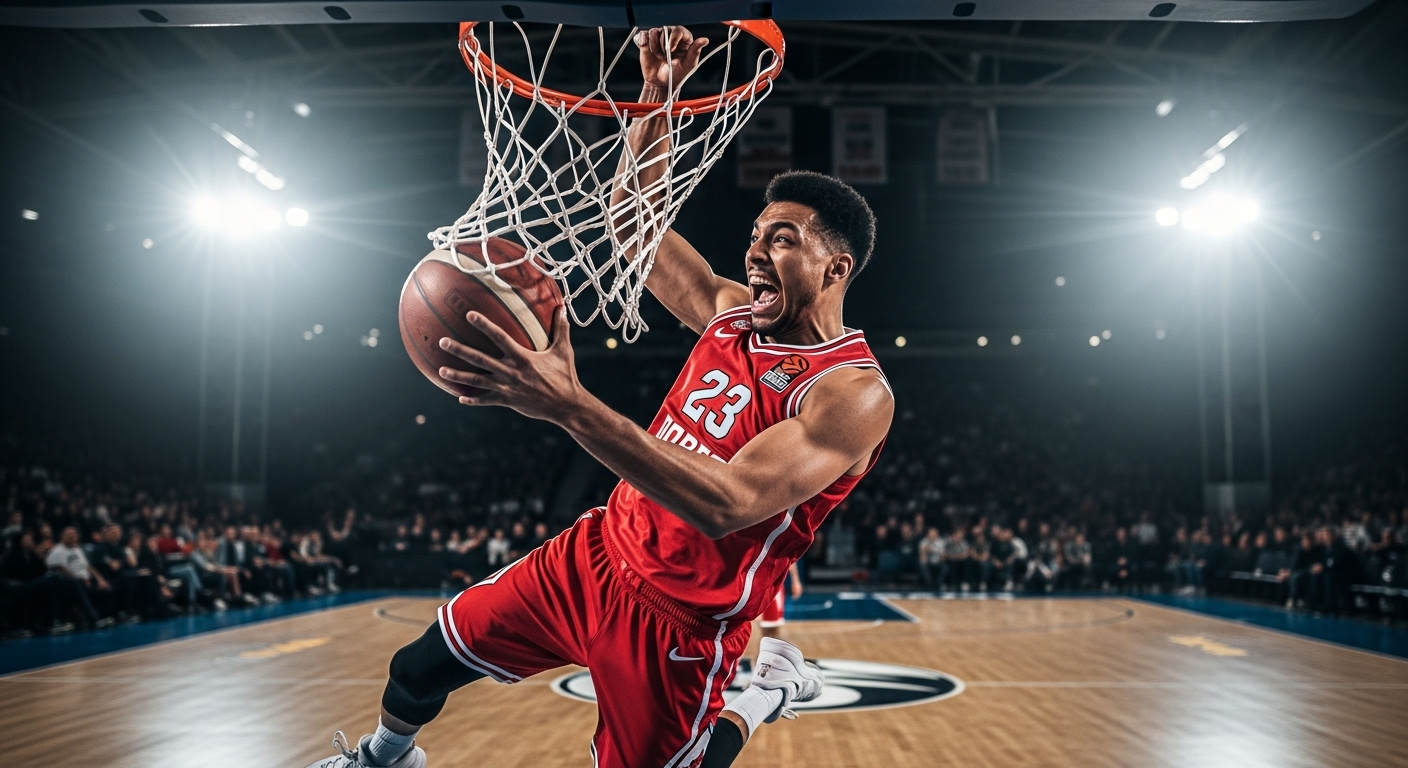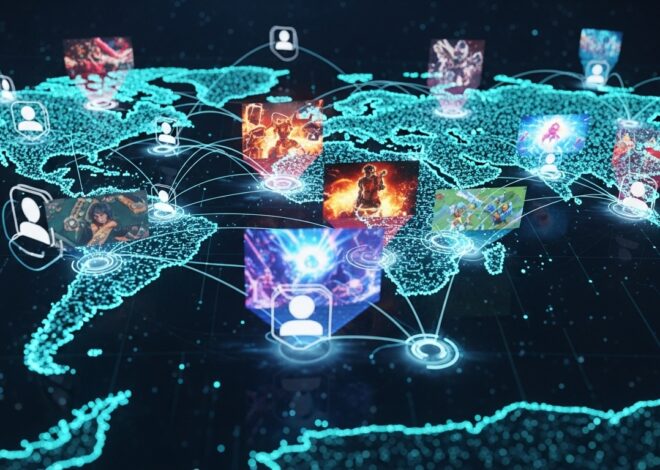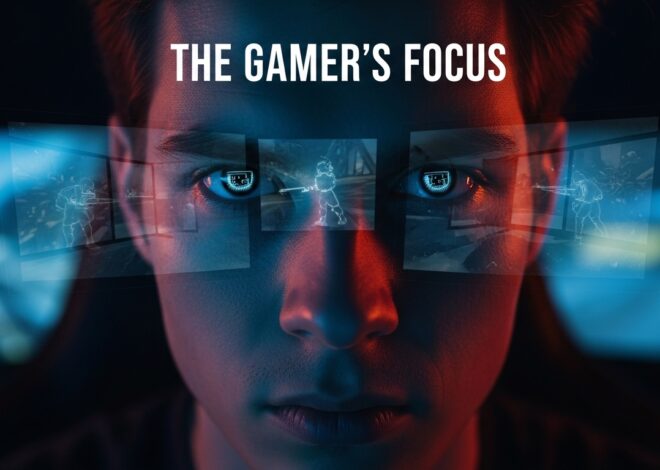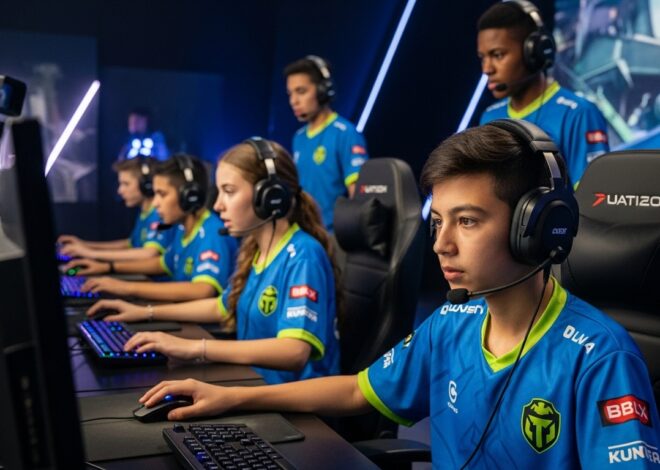
Esports: Unveiling the Global Revolution of Competitive Gaming
Esports, short for electronic sports, has evolved from a niche pastime for dedicated gamers to a global entertainment juggernaut, captivating millions worldwide. With tournaments that fill entire stadiums, players who have reached celebrity status, and a thriving ecosystem involving sponsorships, merchandise, and media coverage, esports is no longer just a form of entertainment; it’s a multi-billion-dollar industry that rivals traditional sports in terms of both viewership and revenue. In this post, we’ll delve deep into the history, growth, and future of esports, examining how competitive gaming has transformed from casual LAN parties to an internationally recognized phenomenon.
The Humble Beginnings of Esports: From LAN Parties to Global Competitions
The roots of esports are grounded in the early days of video gaming. In the 1990s, multiplayer games were largely restricted to local networks where friends would connect their computers and compete in games like Quake, Warcraft II, and StarCraft. These gatherings, known as LAN (Local Area Network) parties, were often informal, with players vying for bragging rights rather than monetary prizes. However, these LAN parties played a significant role in fostering the spirit of competition, teamwork, and camaraderie that would eventually give rise to the larger esports ecosystem.
The Rise of Online Gaming
While LAN parties laid the foundation for competitive gaming, the true turning point came with the widespread adoption of the internet. The introduction of broadband connections in the late 1990s allowed gamers to compete against others across the globe. Games like StarCraft and Quake became staples in early online competitions, and the first online tournaments began to take shape. These events helped establish esports as a legitimate form of competition, attracting not just players but also fans.
The First International Tournaments
As online gaming continued to grow, so did the desire for organized, competitive play. The early 2000s saw the creation of international tournaments like the Cyberathlete Professional League (CPL), founded in 1997, and the World Cyber Games (WCG), which launched in 2000. These competitions were pivotal in raising the profile of esports, with gamers from different countries battling for global titles and large cash prizes. The stage was set for esports to transition from a fringe activity to a mainstream spectacle.
The Golden Age of Esports: Emergence of Iconic Titles
By the mid-2000s, esports had begun to solidify its place in the global entertainment landscape. A handful of iconic games were introduced, each bringing its own unique contributions to the esports ecosystem. These games laid the groundwork for modern esports, and their competitive scenes remain influential today.
League of Legends: The Catalyst for Modern Esports
Arguably the most influential game in shaping the modern esports scene is League of Legends (LoL). Released in 2009 by Riot Games, LoL’s blend of strategy, teamwork, and fast-paced action quickly captured the gaming community’s attention. Its accessibility—combined with its deep, competitive gameplay—made it a hit across a broad demographic. What truly set League of Legends apart, however, was its approach to esports. Riot Games invested heavily in developing a robust infrastructure for competitive play, including regional leagues, international tournaments, and a clear path to professional play.
In 2011, Riot launched the League of Legends World Championship, and its popularity grew exponentially from there. By 2019, the championship finals boasted a viewership of over 100 million, cementing LoL as a cornerstone of esports and demonstrating the huge global demand for professional gaming. LoL’s success has paved the way for other games to enter the competitive gaming space.
Dota 2 and the Quest for Immortality
Another game that helped establish esports as a global phenomenon is Dota 2, developed by Valve Corporation. Released in 2013, Dota 2 quickly became one of the most popular multiplayer online battle arena (MOBA) games in the world. The Dota 2 International (TI) tournament, launched in 2011, set new records for esports prize pools, with the 2021 edition reaching over $40 million.
Dota 2’s complexity, strategic depth, and emphasis on teamwork have made it one of the most exciting esports to watch. TI has become the game’s pinnacle event, attracting millions of viewers each year. The combination of high-level play, massive prize pools, and passionate fans has made Dota 2 a central pillar of the esports ecosystem.
Counter-Strike: Global Offensive (CS:GO): The FPS Legend
No discussion of esports would be complete without Counter-Strike: Global Offensive (CS:GO), a game that has been a cornerstone of competitive gaming since its release in 2012. Valve’s CS:GO is a tactical first-person shooter (FPS) that requires precise aim, strategic thinking, and teamwork. It has cultivated a loyal fanbase that has fueled its success in esports tournaments for over a decade.
Major events like the ESL Pro League and Intel Extreme Masters (IEM) have drawn millions of viewers, and the game’s professional scene has remained one of the most stable and competitive in esports history. Teams like Astralis, FaZe Clan, and Natus Vincere have become legends in the CS:GO scene, and the game’s influence extends beyond esports into broader gaming culture.
The Esports Industry: Beyond the Games
While the games themselves are the centerpiece of esports, the industry surrounding them is incredibly diverse and contributes to the overall growth and success of competitive gaming. The esports ecosystem includes professional teams, sponsorships, media rights, broadcasters, streaming platforms, and much more.
Professional Teams and Players
Esports is no longer just about a handful of amateur gamers; it has evolved into a full-fledged professional industry. Teams like Cloud9, Fnatic, G2 Esports, and Team Liquid are household names in the esports world, and their players are some of the most well-known athletes in the industry. These teams sign players to contracts, train them extensively, and compete in high-profile tournaments across the globe.
Professional players are treated like athletes, with training schedules, coaches, and analysts who help improve their performance. They earn money through tournament prize pools, sponsorships, and streaming deals, with top players earning substantial salaries and even signing endorsement deals with major brands. Esports players are not just gamers; they are celebrities in their own right.
Sponsorship and Revenue
One of the key factors behind the explosive growth of esports is the influx of sponsorships and brand partnerships. Companies from a variety of industries, including technology, energy drinks, fashion, and telecommunications, have realized the potential of esports to reach young, tech-savvy audiences. Brands like Red Bull, Intel, Nvidia, and Nike have all made significant investments in esports, sponsoring teams, tournaments, and even individual players.
Sponsorship deals provide esports organizations with the financial resources to operate and grow, while giving brands the chance to promote their products to a massive and engaged audience. The value of these sponsorships continues to rise, as more companies recognize the potential of esports to drive brand awareness and sales.
Streaming Platforms: The New Era of Content Consumption
In the world of esports, streaming platforms like Twitch and YouTube Gaming have played a crucial role in connecting players with fans. These platforms allow gamers to stream live matches, engage with their followers, and build personal brands. Viewers can watch their favorite players compete in real-time, interact with streamers through chat, and even support their favorite content creators financially through subscriptions and donations.
Twitch, in particular, has become the go-to platform for esports streaming, with millions of viewers tuning in to watch major tournaments and follow their favorite players. These platforms have not only created new revenue streams for players and organizations but have also transformed how fans consume content, turning esports into an interactive, social experience.
The Growth of Esports Media and Broadcasting
The rise of esports has also led to the growth of dedicated esports media outlets and broadcasting channels. Networks like ESPN and TBS now feature esports broadcasts, bringing competitive gaming into mainstream television. In addition, platforms like YouTube and Facebook Gaming have made it easier than ever for fans to watch esports content on-demand.
Esports tournaments themselves are often broadcast live, with professional casters and analysts providing commentary and insights into the action. These broadcasts can attract millions of viewers, particularly for major events like the League of Legends World Championship or The International.
The Future of Esports: Trends and Innovations
As esports continues to grow, new trends and innovations are shaping the future of competitive gaming. Some of the key developments to watch out for include:
The Rise of Mobile Esports
While PC and console gaming have traditionally dominated the esports scene, mobile gaming is on the rise, especially in regions like Asia. Games like PUBG Mobile, Free Fire, and Arena of Valor have quickly gained a massive following, with mobile esports tournaments growing in prominence. Mobile esports is more accessible than traditional gaming, and the growing penetration of smartphones worldwide means that mobile gaming is set to become a dominant force in the esports industry.
Integration with Traditional Sports
Esports and traditional sports are beginning to overlap. Many traditional sports leagues, such as the NBA and NFL, have invested in esports teams and tournaments. This integration could lead to more hybrid events that blend the worlds of physical sports and digital gaming, appealing to fans of both.
Virtual and Augmented Reality
The future of esports may also involve virtual reality (VR) and augmented reality (AR), which would allow players to compete in immersive, three-dimensional environments.


